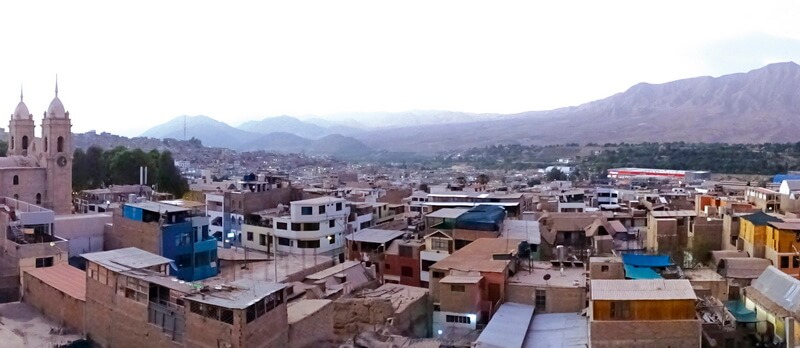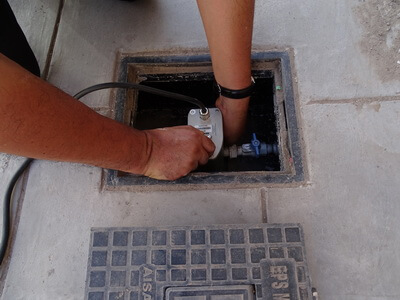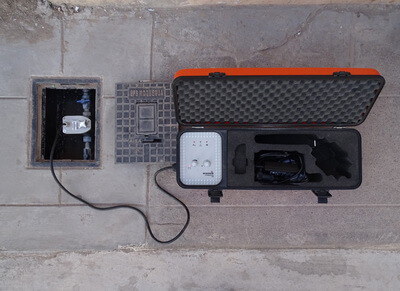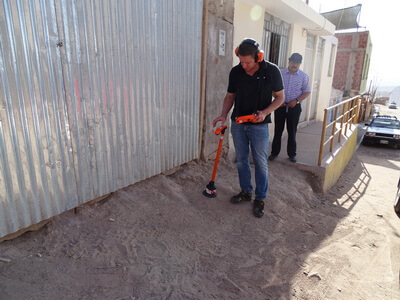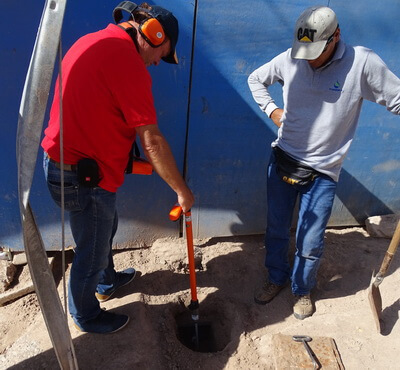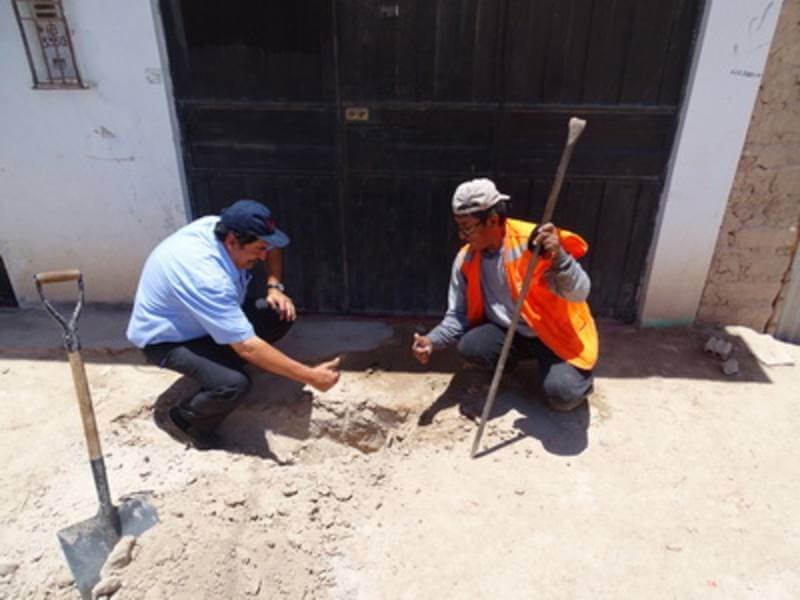Water makes you important
Water is nowadays such a precious commodity that some countries which in fact already have too little drinking water for their own demands are selling rights to water sources to international companies or are even exporting water they desperately need themselves. The better the water supply functions in a country, the lower the risk of a drinking water shortage will be. This is turn reduces the risk of political dependence on neighbouring states or companies and lessens the potential for conflict about the question: "Who does water belong to?"
Water costs money
Whatever your attitude to the sensitive matter of trading in the commodity of water, one thing is certain:
Tapping into new drinking water resources is not always easy, and is frequently also associated with high development and energy costs, for example with seawater desalination plants. Investment is needed to establish and maintain infrastructure, as well as for the treatment and provision of drinking water. If the customer of a water supply company wishes to be supplied with high-quality drinking water at any location, at all times and in individual quantities, this costs money, and the consumer has to pay for this service. Water must nevertheless continue to be affordable for everyone.
Water is precious
The main task consists of raising awareness among suppliers and consumers when using water and understanding its value. It is also important to train staff at water supply companies in methods and equipment designed to minimise water losses and about the introduction of water loss management.
Water knows no borders
Water loss management does not however just mean "There's a hole in my bucket", but also involves finding leaks in pipes and repairing them. The important issue of water is of interest beyond national borders, and this is why there additionally needs to be an international exchange about organisation, administration and technology.
Water can be eaten
Water also plays a key role in food manufacturing. Consumers often do not see at first glance how much water foodstuff production takes. For example, some 16.000 l water is needed to produce 1 kg of beef, and around 4,300 l for the same quantity of chicken. This includes rearing, processing the meat and all subsequent processes until its consumption.
Such "virtual" water increasingly exacerbates the drinking water shortage in developing countries. The extraction of water for agriculture further reduces our water resources, which are already in short supply.
Water can be stolen
In such a country as Peru where the supply of drinking water is increasingly becoming a major problem, few people understand that the issue of water costs both time and money. The theft of water still seems to be a minor offence for many. Both the supplier and the consumer are not yet sufficiently aware that the lack of revenues prevents investment in the water supply. In Peru over 30% of its drinking water is not billed, whether due to poor organisation, pipe leakage or illegal extraction. One key step towards the effective provision of water and reduction in water losses through theft involves the systematic installation of water meters throughout the country.
The drip-drip effect costs money
Enrico Sanchez, an employee at a water supply company in Peru, has suspected for a long time that a poultry abattoir on the eastern outskirts of the city is using a lot more water to process its meat than shown in its official consumption statements. And this is not the only indication of water theft on a large scale. The discrepancy between water consumption levels and the amount of water that then arrives at wastewater treatment plants has long led to the suspicion that many businesses and homes are procuring water illicitly. To date opportunities and with them the interest in finding illegal water connections have been very limited, and the authorities restricted themselves to tolerating the situation in silence.
But it is not just suppliers who are hurt by water theft, but also consumers who have to pay for the resulting losses. Such selfish behaviour thus costs both parties money.
How to find illegal connections?
Still waters can be heard
An employee from the water supply company sets off with colleagues for the suspect poultry abattoir, backed up by staff from Hermann Sewerin GmbH.
Cooperation with Sewerin means that the water supplier has professional equipment technology at his disposal. When used with the COMBIPHON®, the AQUAPHON® A 200 makes it possible to locate pipes made of plastic and fibre cement. This also makes the process ideal for detecting illegal connections.
Michael Kersting from Sewerin briefly explains how the devices are used. In South America water meters are typically installed outside a building, so they are freely accessible.
Enrico opens the cover and fits the COMBIPHON® tapper to the house service connection. Acting like a hammer, the tapper strikes the pipe with a freely selectable intensity and frequency. The sound that spreads along the pipe can now be located on the surface using the ground microphone of the AQUAPHON® A 200.
Electro-acoustic detection normally calls for plenty of experience and good hearing. However, thanks to the self-explanatory menu navigation, simple handling and clearly audible tapping noises Enrico is at once equipped to set off in search of pipes. After just a few meters he comes across a spot where the sound splits. As he is not sure how to proceed for a moment, he compares his acoustic impression with what he can see on the screen of the AQUAPHON® A 200. He then changes direction and follows the sound branching off from the main pipeline until he is standing right in front of the building belonging to the poultry abattoir. As this branch does not appear on the official plan, his suspicion of an illegal house service connection seems to have been confirmed.
"Santa Maria!" Enrico has a huge grin on his face. "Sí. Creo que hay algo. Michael, le pido que eche una mirada." ["Yes, I think there's something there. Michael, take a look, please".] The Sewerin employee looks at the AQUAPHON® A 200 and nods in agreement. The ground is now dug up at this point by the other employees from the water supply company. Lo and behold: Enrico has found the illegal pipe.
Water loss management pays off
With Sewerin's help a complex and seemingly intractable problem becomes a process that can be solved in easy steps, even for inexperienced users.
It is now possible to investigate suspicious circumstances more easily, targeting house connections and pinpointing them with the help of sophisticated technology and human expertise.
Besides this personal triumph for Enrico, the newly installed water meter henceforth translates into real money for the company.

